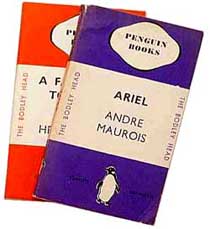DK Arts & Entertainment: Literature
Literature uses words to create works of art. It is usually written, but some works are passed on by word of mouth. There are several different forms of writing, such as poetry, drama (plays), or NOVELS, but they can all offer insights into people’s innermost thoughts and feelings.
The earliest written works were epic poems—long stories or MYTHS about the adventures of heroes. The Indian epics Ramayana and Mahabharata (c. 500 BC) are still read today. Two famous Greek poems, Homer’s Odyssey and Iliad, were first written down from the spoken tradition in the 8th century.
Table 38. LANDMARKS
| c. 1307–1321 | Divine Comedy Dante Alighieri |
| c. 1387–1400 | The Canterbury Tales Geoffrey Chaucer |
| 1609 | Sonnets William Shakespeare |
| 1851 | Moby Dick Harold Melville |
| 1922 | Ulysses James Joyce |
| 1949 | Nineteen Eighty-Four George Orwell |
| 1968 | One Hundred Years of Solitude Gabriel García Márquez |
Literature differs from country to country because of the language it is written in. Some forms of literature come from one country, such as Japanese haiku poetry. However, the themes of love, revenge, and death are found everywhere.
Creative people who have something to say need to find a means of expression. Painters use paint, and writers use words. Authors write to inform, explore, amuse, inspire, and to tell a good story. They also write NONFICTION to record events and lives.
Novels are stories in prose (not verse) that explore people and society using imaginary characters. They are structured around PLOTS and are usually more than 50,000 words in length. Novels are organized into categories of fiction called GENRES.

Most books had hard covers until the first paperback novels were published by Penguin in 1935. Paperbacks were cheap and made books more affordable.
One of the earliest novels was Don Quixote (1605) by the Spanish writer Miguel de Cervantes (1547–1616). Around 100 years later, novels became popular when Robinson Crusoe (1719) was published. Written by English author Daniel Defoe (1660–1731), it is the story of a shipwrecked man alone on a remote island.
Genres are categories of fiction (imaginative stories), depending on what the story is about. A love story belongs to the romance genre. A murder story is categorized as crime. Stories can belong to more than one genre.
Authors, like readers, have their favorite interests and will only write on a subject they feel connected to. Categorizing a book means that readers know what to expect and where to look for it in a bookstore or library. Changing social trends and tastes can inspire new genres.
The first popular detective in fiction was Sherlock Holmes, created by Arthur Conan Doyle (1859–1930).
The plot is what happens in a story. Most plots have a beginning, a middle, and an end, and contain problems that are eventually solved. Writers usually invent plots, although some authors, like William Shakespeare, may take them from history.
All cultures have myths—stories that reflect religious and social beliefs. These stories feature gods and superhumans and explore the great questions of life—such as “Where do we come from?”, “Why are we here?”, and “Why does evil exist?”
Mythic heroes are humans with superhuman powers, often because one of their parents was a god or goddess. They have to show tremendous courage in overcoming spiritual and physical challenges to save an individual, their family, or an entire nation.
Although myths are old, they still appeal to us because they contain lasting truths about the way people feel. The myth of Persephone, for example, is about the annual crop cycle, but also illustrates the strength of the bond between mother and daughter.
Nonfiction deals with facts and real events, and is written in prose. It includes histories, essays, travel writing, letters, biographies, and diaries. The first known work of prose was a history of the Persian wars, written by Herodotus c. 430 BC in ancient Greece.
Much nonfiction is written for reference (information) only, and is not considered to be literature because the author’s style and point of view are irrelevant. Compare this with a biography, where the author’s writing style and interpretation of facts are essential to the understanding of the subject.
A diary is a daily record of a person’s thoughts and experiences, often not intended for publication. The great English diarist Samuel Pepys (1633–1703) wrote in code. His diary records a mixture of great public and intimate personal events and builds up a vivid picture of the times in which it was written.
This young Jewish girl recorded how she and her family hid from the Nazis in Amsterdam during World War II. She gave a moving account of the difficulties of her life, but also her friendship with the son of the family hiding with them. Anne Frank died in a concentration camp in 1945.
